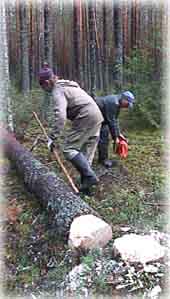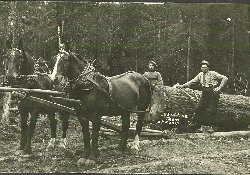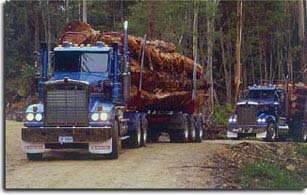
 |
LOGS |
Mission We want to keep the earth green and keep the water pure. We believe in working with the watershed in the woods. We at LOGS choose to follow the Voluntary "Best Management Practices" . This means our members use erosion control, stay out of creeks, and do not "highgrade" (cut only high grade trees- leaving crooked or diseased trees to form the canopy). We also only harvest the number of trees that can regrow between harvests. We also provide a training program designed to improve the safety, quality, productivity, environmental awareness, and professionalism of the logging industry. The priority should be given to an alternative approach in forest regeneration - wide scale use of selective logging, which is much more efficient and cheaper while simultaneously provides faster forest regeneration. |
||
| Headquarters:
Three Birch Way Ramford County Ramford City |
Board of Directors Mabel Woods, Chairperson |
 |
|
|
|
|
 |
History The pace of cutting, coupled with the damage from many forest fires, far exceeded the sustainable supply of timber in the region and the lumber production began to fall. In the tropics, the deforestation rate is approximately 100 acres per minute. In the US, about 95% of the original old-growth forest has already been lost, and the destruction continues. This is due in part to industrial forestry operations that clearcut natural forests and replanted with commercial species, converting biodiverse forest ecosystems into even-age monocultures. In addition to harming wildlife habitat, large scale clearcutting often causes extensive damage to soils and watercourses, relies heavily on chemical fertilizers and pesticides, and compromises timber quality. This negatively impacteded biological diversity, wildlife habitat, soil and water quality, climatic stability, and the human communities that depend on forests for their survival. The amount of accessible timber decreased to the point where many operations became unprofitable and mills throughout the region closed. The mills were many communities' sole economic base and with the closure of the mills the towns themselves often all but disappeared. For example, the town of Forest Run, located about 30 miles (50 km) north of Ramford City, was the home of the Baker Lumber Company and the Ross-Saskatoon Lumber Company. Each of these mills was capable of cutting 75,000 board feet of lumber a day. Loggers formed LOGS to address these problems and to find solutions. They then turned to sustainable yield and reforestation to rebuild their industry. Ecoforestry operations around the world are pioneering a path toward sustainable forest management. Yet many of them are still searching for suitable markets and decent prices for their woods. One solution to protecting forest resources is a move to ecologically sustain-able forest management. Sustainable forestry, or ecoforestry, balances economic and ecological needs. Ecoforestry aims to provide a continuous yield of quality forest products while preserving the essential biological and ecological integrity of a healthy, self-perpetuating forest. The following principles are fundamental components of the LOGS philosophy: Ecological balance All-age management Explicit management planning Soil conservation Sustainable yield Social responsibility |
||
 |
|||